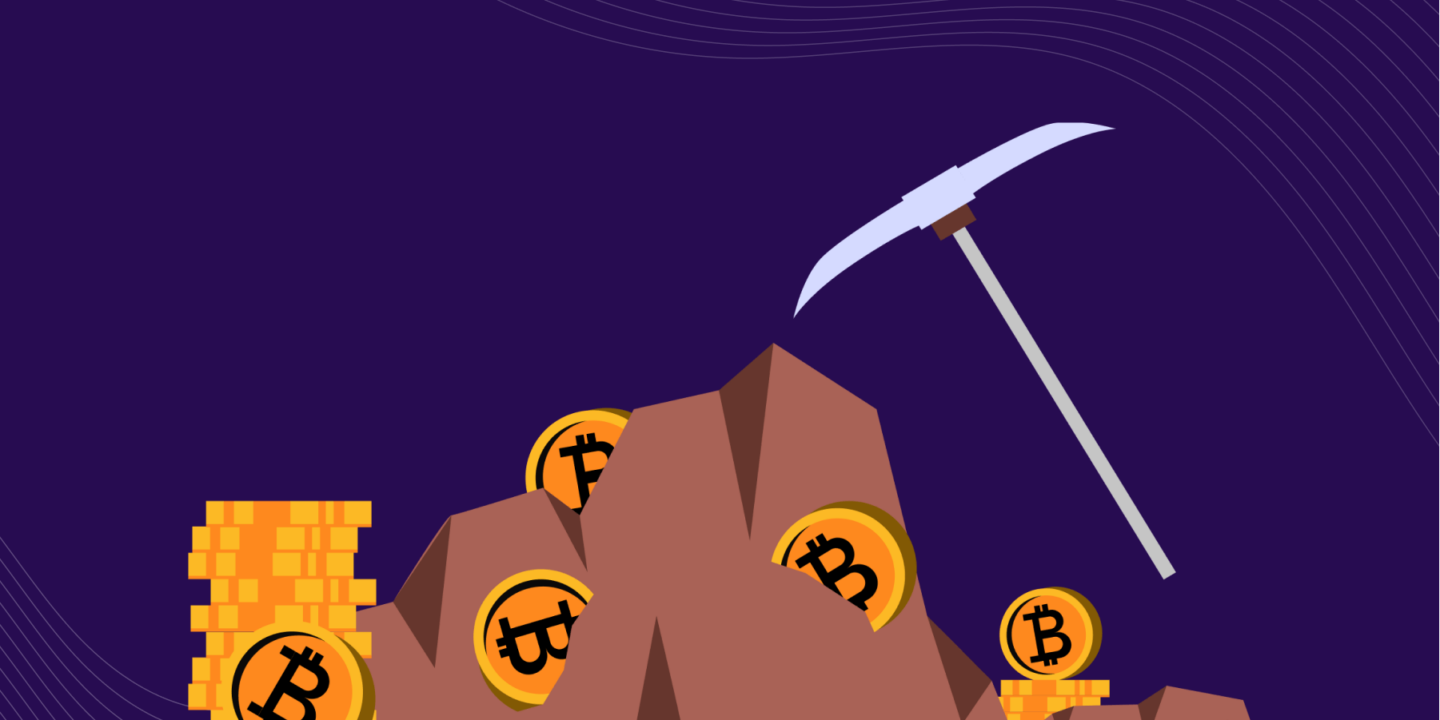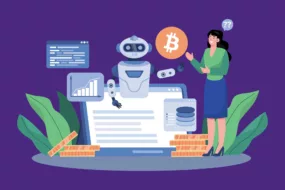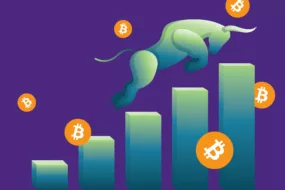
Mining is the process of extracting valuable minerals and metals from the earth. We all know that. But how did the crypto industry end up using this term? I still remember the last time the term mining popped up in a conversation, we ended up talking about poor working conditions, environmental hazards, and some conspiracy theories. Is Mining in cryptocurrency the same? Well, that is exactly what we intend to discuss today.
Cryptocurrency mining started from the dorm room of nerds and has now moved to complicated mining rigs that require thousands of dollars to get started. But is it even profitable to mine? We shall take it from the top.
What is Mining in Cryptocurrency?
People often think mining cryptocurrency is a way to earn crypto like Bitcoin. However, that is not the only aim behind mining. Miners don’t get Bitcoin for free. In return, they must use computing power and resources to validate the transactions. That didn’t help much, eh? Let us explain it in conventional terminology.
Imagine you send $50 to your friend via a traditional finance ecosystem. There are centralized systems that will update a debit entry in your bank account and create a credit entry in theirs. However, this is easier said than done when it comes to cryptocurrency. Because blockchains are publicly accessible to everyone, anyone could copy-paste their money and spend it twice. This is known as the problem of ‘double-spending.
Therefore, nodes (or computers attached to the blockchain) make sure that no fraudulent activity takes place on the cryptocurrency network. The process of doing so is called mining. In the process, they earn some crypto.
This mining is performed using sophisticated hardware that solves a complicated mathematical problem. The one who solves it first wins the block rewards (or cryptocurrency allocated to reward the miners)
How Does Crypto Mining Work?
Public blockchains are distributed in nature. Any individual can connect to the blockchain through their computer (nodes) to see and validate the transactions. The way it works is that every individual node has a copy of the blockchain at any given point. Does this also mean that they can change this copy as they wish? Nope.
When anyone tries to do that, their copy of the blockchain looks completely different as compared to the others, and they are immediately caught. However, there is one problem involved here.
While they could get caught, if it were so easy to defraud a system, everyone would give it a shot. They would try to replicate their digital balance and end up with a lot of money. But it is not, thanks to Satoshi Nakamoto, the pseudonymous founder of Bitcoin, who created proof-of-work. Proof of work is based on a simple principle. If the effort required to defraud a system is too high, no one will cheat it for the sake of it.
Proof-of-Work
You often hear – Miners solve a complicated mathematical problem to validate the block and win mining rewards. But that is not entirely true. Essentially, these miners are simply guessing a number called ‘nonce‘. This nonce has to follow a specific set of rules. For example, this nonce will result in a new number called ‘Hash‘. As a rule, the nonce should be such that this new ‘hash’ starts with four zeroes.
The first miner to guess the target ‘hash’ (by guessing nonces at random) wins the block rewards. At times trillions of guesses are made before you can reach a suitable hash. And this number keeps on increasing as more miners join the party. This is called mining difficulty and as it goes up, it requires higher computing power. Computing power is measured in the terms of “hash rate” or Giga hashes per second (GH/s).
There is also one more benefit of mining other than earning Bitcoin. You get to vote on Bitcoin improvement proposals (BIP). If miners disagree on any change, it forks the blockchain into two different Blockchains.
Proof-of-Stake
Proof-of-stake is another consensus mechanism used to agree while adding the next block to the blockchain. The key difference between Proof-of-work (PoW) and Proof-of-stake (PoS) is that all the miners are not competing to solve the complicated mathematical puzzle (guess the correct ‘hash’) in PoS.
Instead, all the validators in PoS (They are NOT called miners in PoS), stake (lock-in) some of their crypto. Once a block is due for validation, the in-built network algorithm picks a random validator based on the amount staked, time since staked, and other parameters of randomization to validate the block.
How to Get Started with Cryptocurrency Mining?
What if I told you that a decade ago, you could mine Bitcoin using your personal computer? Also, you would get 50 BTC as the block reward. Perhaps, a lot of us were busy elsewhere at that point in our lives.
For now, you need to invest in massive infrastructure to set up mining (more on it shortly).
But why is that? As it turns out, a new block is added to the Bitcoin blockchain every 10 minutes.
In other words, the difficulty of the ‘complicated mathematical puzzle’ (nonce) is such that the solution will come out every 10 minutes or so. Bitcoin algorithm keeps on evaluating this difficulty every couple of weeks. If the nonce is guessed in less than 10 minutes on average, the difficulty increases and vice versa.
So if more nodes try to validate the same number of blocks, a solution is reached faster, and hence the difficulty goes up accordingly.
Mining hardware
We don’t want to sound like a bummer, but to mine profitably, you need to invest in a powerful computing device like a Graphic Processing Unit (GPU). These are the same GPUs that are mandatory for running some high-end games. Their prime aim is to boost performance by processing multiple pieces of data simultaneously.
A subset of GPU is ASIC or Application Specific Integrated Circuit. As the name suggests, these devices are made for specific applications. For Bitcoin, the system requirement is made up of ASICs entirely. Modern-day ASICs are much more powerful than CPUs or GPUs, and miners can reach a hash rate of 200 TH/s.
Mining pools
Once you have the mining hardware in place, it isn’t the end of the story. You have to get a fast mining rig, which is a combination of multiple ASICs put together, OR realistically, you need to join a mining pool. A mining pool is a group of miners that combine their mining power and split the Bitcoin rewards proportionately.
In the current scenario, the chances of guessing the correct nonce are one in a trillion if you operate as an individual, despite having a powerful mining rig. Apart from that, Bitcoin mining consumes a lot of electricity. So as an individual, you are most likely to incur losses while mining.
If you purchase $2000 worth of ASIC to mine Bitcoin, you will represent only 0.001% of the total mining power. This means the chance of winning the block reward is only 0.001%. This way, you may never recoup your investment.
Different Mining Methods
As discussed above, mining has undergone an evolution cycle of its own. This has yielded many mining methods.
A. CPU mining
Back in the day, computing power offered by your typical CPU was enough to mine cryptocurrencies. The difficulty was such that you did not require any specific equipment to mine cryptocurrency. Needless to say that Bitcoin and Ethereum have gone past this stage now. However, you may try mining Dogecoin using this method.
B. GPU mining
GPUs are specific devices created to generate high processing power. GPUs are extensively used in Ethereum mining. A lot of these GPUs are put together in the form of a mining rig. This is coupled with a cooling system and a motherboard.
C. ASIC mining
ASICs are application-specific GPUs that have no purpose other than mining cryptocurrency. Is it a coincidence that it rhymes with Meesiks (Rick and Morty Character that exists for a single purpose)?
D. Cloud mining
Cloud mining is a great alternative if you wish to bypass the ever-increasing cost of GPUs and ASICs. It uses infrastructure set up by major corporations like Amazon (AWS) and Microsoft (Azure) to compute the nonce. Cloud mining also allows individuals to enter the mining game.
What Are the Pros and Cons of Mining Crypto?
Mining is an indispensable activity within the crypto ecosystem. You need to have enough miners to ensure that all the transactions are validated and that no one is allowed to double-spend. The decentralization aspect of many cryptocurrencies is often measured in the number of nodes available in the network. If the nodes are too less and concentrated, they might collaborate a conduct a network attack. Therefore, mining is extremely important for a successful blockchain.
Secondly, miners also represent the collective vision of a blockchain. If some of the nodes (miners) disagree with how a blockchain project works, they are free to fork it and come up with their own. Similarly, for any updates, it is possible only when all the nodes agree. Therefore, miners or mining is necessary for network upgrades.
When it comes to the cons of mining, one has to address the fact that it is energy intensive. Mining one Bitcoin requires energy equivalent to the power consumed by a US household. However, efforts are being made to develop less energy-intensive mining methods, like PoS.
Secondly, since mining is energy intensive, it often wears out the GPUs and ASICs pretty soon.
Third, is the regulatory risk. You might end up investing a lot in mining equipment, just to know that your government has decided to ban mining.
Is Crypto Mining Legal?
Most jurisdictions across the globe are yet to come up with regulations around mining cryptocurrency. For example, the Indian government is yet to have a stance for or against cryptocurrency mining.
Some countries like Isreal treat cryptocurrency mining as a business and hence it is taxed under similar laws.
On the other side of the spectrum, China, Vietnam, and Bangladesh are among a few countries that have banned mining altogether.
How Profitable Is Crypto Mining in 2022?
The number of Bitcoins rewarded halves every four years. Currently, this number stands at 6.25 Bitcoins. Multiplying it with the current price of $25,000 per Bitcoin, each block would yield a total of $156,250. Your share would depend on the hash power supplied in a mining pool.
Once you have calculated your Hash rate and the cost of electricity, you can check your profitability from here.
The price of BTC has gone down by 80% from its all-time high. Therefore, it is quite difficult to mine profitably currently. However, investing in cryptos may be a better idea. No expensive hardware or complicated methods are involved here; you can start with as low as $5.
Are There Any Alternatives to Crypto Mining?
From a governance perspective, mining is absolutely necessary for a crypto ecosystem. However, the entire industry is currently looking for ways to come up with greener energy to power mining operations. El Salvador, the first country to accept Bitcoin as legal tender, has come up with a project, ‘Volcanode’, that aims to use thermal energy to run a mining rig.
Infamous billionaire Elon Musk has also suggested some greener modes for the same.
FAQs
1. What purpose does crypto mining serve?
Crypto mining serves a dual purpose. It helps in maintaining the accurate state of the ledger (blockchain) at all times. Secondly, miners also vote on improvement suggestions. Basically, it’s the core of operating a blockchain network.
2. How long does it take to mine one crypto?
The time taken to mine one crypto depends on the block time of a blockchain. For Bitcoin, this stands at 10 minutes, while for Ethereum, it is at 10 to 20 seconds. Block time is the interval at which a block is added to the blockchain.
3. How expensive is crypto mining?
Given the current difficulty levels, it is quite expensive to set up mining operations. One needs to invest in GPUs, ASICs, motherboards, and cooling systems to get started. Additionally, it is also quite complicated if you are not already familiar with the process.
4. Do I need a license to mine cryptocurrencies?
The current regulations do not suggest any license to be obtained to mine cryptocurrency. However, it is always important to double-check such things to avoid any complications later.





